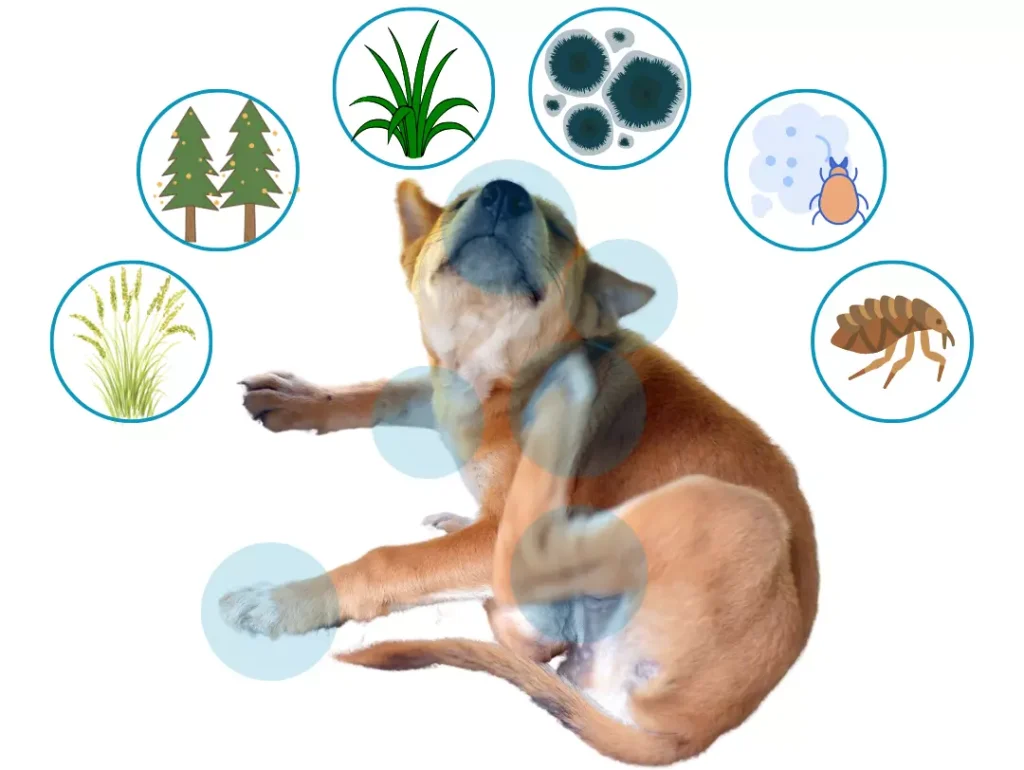Nothing breaks a pet parent’s heart quite like watching their beloved dog scratch endlessly, their skin red and inflamed. If you’re searching for effective dog skin allergies treatment options, you’re not alone in this struggle. Millions of dogs suffer from skin allergies, and their constant discomfort often leaves owners feeling helpless and frustrated.

The Hidden Pain Behind Your Dog’s Constant Scratching
The sight of your furry companion scratching until they create raw patches of skin is more than just concerning—it’s heartbreaking. Itchy skin doesn’t just affect your dog’s physical comfort; it disrupts their sleep, changes their behavior, and can strain the bond between you and your pet. Many owners report feeling guilty, wondering if they’ve somehow failed their loyal companion.
When your dog experiences an allergic reaction, their immune system overreacts to normally harmless substances. This overreaction triggers inflammation throughout their skin, creating the intense itching that drives them to scratch, lick, and bite at their skin compulsively. Understanding this process is the first step toward finding relief.
Understanding What Triggers Allergic Reactions in Dogs
Environmental allergies are among the most common culprits behind canine skin issues. Dust mites, pollen from trees and grasses, mold spores, and other airborne particles can trigger atopic dermatitis in sensitive dogs. These microscopic invaders can turn your home into a source of constant irritation for your pet.
Food sensitivities represent another significant trigger. An elimination diet often becomes necessary to identify problematic ingredients. Common allergens include beef, chicken, dairy products, and wheat. The process requires patience, as it typically takes eight to twelve weeks to see meaningful results.
Flea saliva creates particularly intense reactions in allergic dogs. Even a single flea bite can trigger widespread itching and inflammation, making year-round flea prevention absolutely critical for affected pets.
Recognizing the Warning Signs
Beyond obvious scratching, watch for subtle indicators of allergic reactions. Hair loss in specific patterns, particularly around the ears, paws, and belly, often signals underlying allergies. Red, inflamed skin that feels warm to the touch indicates the need to reduce inflammation quickly.
Atopic dermatitis typically presents with specific patterns of irritation. Dogs commonly show symptoms on their face, ears, armpits, groin, and between their toes. Secondary bacterial infections can develop in areas where constant scratching has damaged the skin barrier.
Gastrointestinal symptoms like diarrhea, vomiting, or excessive gas may accompany skin issues when food allergies are involved. These dual presentations often require comprehensive dietary management alongside topical treatments.
Effective Treatment Strategies
Modern dog skin allergies treatment combines multiple approaches for optimal results. Prescription medications like Apoquel or Cytopoint can provide rapid relief from itching while addressing the underlying inflammatory response.
Omega-3 fatty acids from fish oil supplements support skin health naturally. These beneficial fats help reduce inflammation from within, often improving skin condition over several weeks of consistent use. Look for products derived from anchovies or sardines for the highest quality.
Topical treatments include medicated shampoos containing antimicrobial and anti-inflammatory ingredients. Regular bathing with appropriate products removes allergens from your dog’s coat while soothing irritated skin. However, avoid over-bathing, which can strip natural oils and worsen dryness.
For suspected food allergies, implementing an elimination diet under veterinary guidance remains the gold standard for diagnosis. This process involves feeding a limited-ingredient diet containing novel proteins and carbohydrates your dog has never encountered before.
Prevention and Long-term Management
Environmental control measures can significantly reduce allergen exposure. Regular vacuuming, washing bedding in hot water, and using air purifiers help minimize dust mites and other triggers within your home.
Maintaining your dog’s skin barrier through proper nutrition and regular grooming prevents many allergic flares. A high-quality diet rich in essential fatty acids supports overall skin health, while regular brushing removes potential allergens from their coat.
Managing your dog’s allergies requires ongoing vigilance and adaptation. Seasonal patterns may emerge, requiring adjusted treatment protocols throughout the year. Some dogs benefit from immunotherapy, which gradually builds tolerance to specific allergens through controlled exposure.
Professional veterinary care remains essential for proper diagnosis and treatment planning. Allergy testing through blood work or intradermal skin testing can identify specific triggers, allowing for more targeted treatment approaches.
The journey to managing your dog’s skin allergies may feel overwhelming, but effective solutions exist. With proper veterinary guidance, consistent treatment, and patience, you can help restore your pet’s comfort and strengthen the bond you share. Remember that skin allergies in dogs are manageable conditions, not life sentences of suffering.
Your dog’s relief—and your peace of mind—are worth the investment in proper diagnosis and treatment. Take the first step by consulting with your veterinarian to develop a comprehensive management plan tailored to your pet’s specific needs.